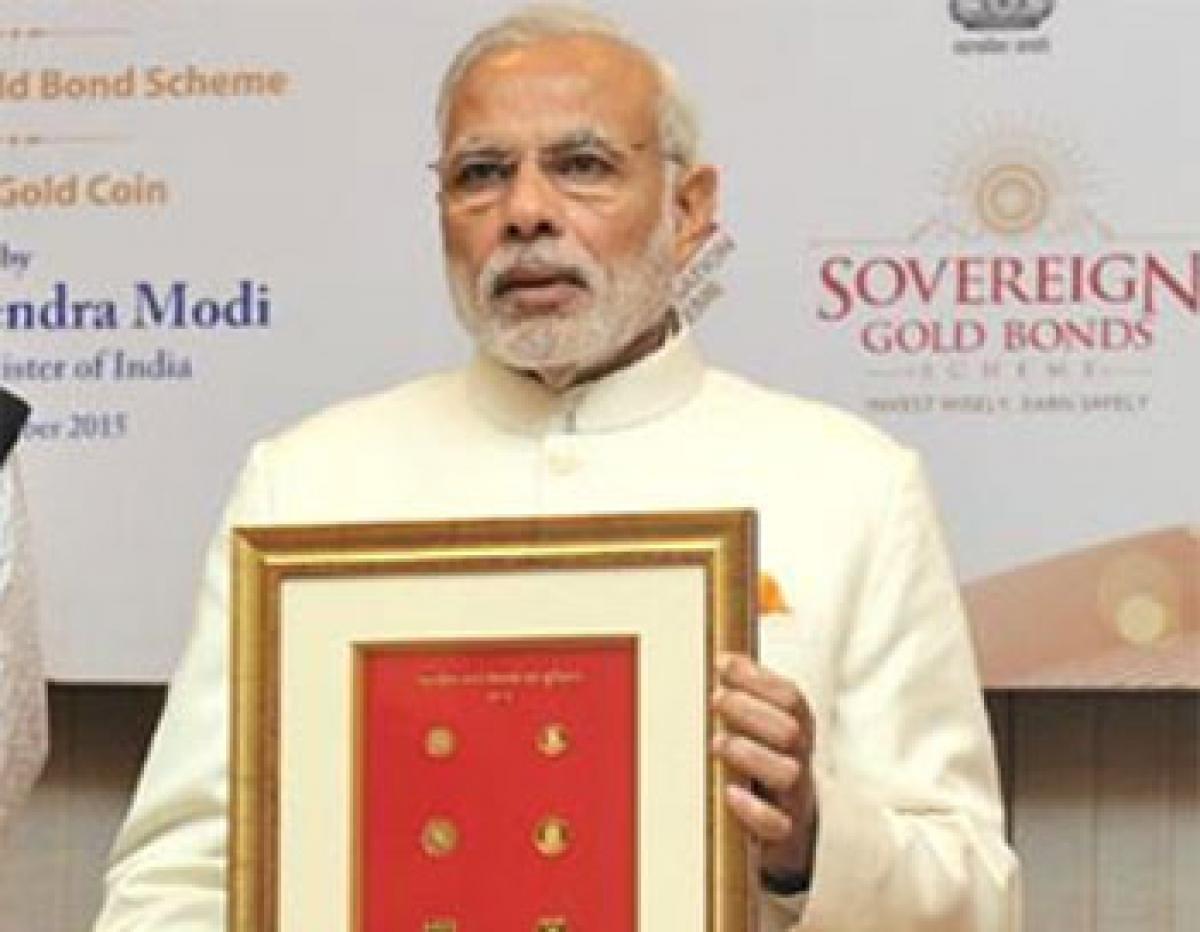Live
- Japan's Saitama reports first bird flu outbreak this season
- ‘Srikakulam Sherlock Holmes’ to hit screens this Christmas
- ‘Mr Manikyam’ FL unveiled; promises a tale of human values
- ‘M4M’ Hindi trailer gets a grand launchat Goa IFFI
- ESA’s Proba-3 Mission Reaches Milestone with Successful Fueling, Set for December 2024 Launch
- Kejriwal tells Delhi voters to back AAP’s single-engine, shun BJP’s double-engine govt plan
- Man booked for objectionable posts on Hindu deities in Karnataka
- 'Own interpretation developed': SC trashes pleas challenging insertion of 'Socialist', 'Secular' in Preamble to Constitution
- Gurugram: Three including two women held in murder case
- Afghanistan: Six killed as vehicle falls into river in Badakhshan
Just In

Prime Minister Narendra Modi’s gold scheme, launched amid much fanfare, has become a non-starter. It is so poor; all that the government garnered is just 400 grams. This against the estimated volume of total gold jewellery with households and temples in the country at over 20,000 tonnes!
.jpg) Prime Minister Narendra Modi’s gold scheme, launched amid much fanfare, has become a non-starter. It is so poor; all that the government garnered is just 400 grams. This against the estimated volume of total gold jewellery with households and temples in the country at over 20,000 tonnes!
Prime Minister Narendra Modi’s gold scheme, launched amid much fanfare, has become a non-starter. It is so poor; all that the government garnered is just 400 grams. This against the estimated volume of total gold jewellery with households and temples in the country at over 20,000 tonnes!
In the first week of November, the Prime Minister launched three gold schemes - Gold Monetisation Scheme, Sovereign Gold Bond Scheme and India Gold Coins – and called them “sone pe suhaaga” (icing on the cake). Against the government expectations that the schemes would be a runaway success, they failed to garner support from gold merchants as they are worried about their business.
The economists, who are now debating the reasons for failure, had believed that the schemes would unlock the gold stocked by the people and give impetus to reforms and push growth rate. Concerned over the developments, officials are now gearing up to set up more centres to assay gold and rope in jewellers as the agents for the scheme.
With the gold being a non-productive asset, the success of monetisation scheme will help India unlock the value of gold and route it to productive use like investments in financial instruments. Stock market pundits see a relation between shares and gold, which used to be inverse i.e., when the shares decline, investors would switch over to gold and when market takes off, they move back.
But now, investors are flocking to financial assets including shares and bonds as they feel the markets are stable and gold prices are declining. In fact, when the gold bond scheme was launched, the gold prices actually started receding, making it an unviable investment. It was felt it would be wise to invest in physical gold than bonds.
But all these assumptions are technical in nature. In reality, the Indian women are fond of gold jewellery and never think of parting with it even for investment – a mindset that is yet to be broken. The layman understanding of the utility of jewellery is something different from depositing pure gold in banks.
But studies show that around one-third of gold imports are in form of investments and not ornaments. Country imports about 900 tonnes annually and a major portion of it meets the physical demand.
New gold schemes are aimed at helping the country meet the challenges arising out of the rise in current account deficit (CAD), which is not good for the economic health of the country.
Another issue plaguing the schemes is about liquidity. Under the deposit scheme, one can deposit gold for fixed periods, as in the case of cash deposits, and the depositor gets cash on maturity with 2.5 per cent interest per annum on the value of the gold at the time of the deposit. The investor can buy same quantity of gold on maturity of the deposit.
Considering that the schemes are aimed at balancing the economy and reducing the import of gold to tide over the CAD, the government may have to look for alternative ways to protect the economy from external shocks.

© 2024 Hyderabad Media House Limited/The Hans India. All rights reserved. Powered by hocalwire.com







